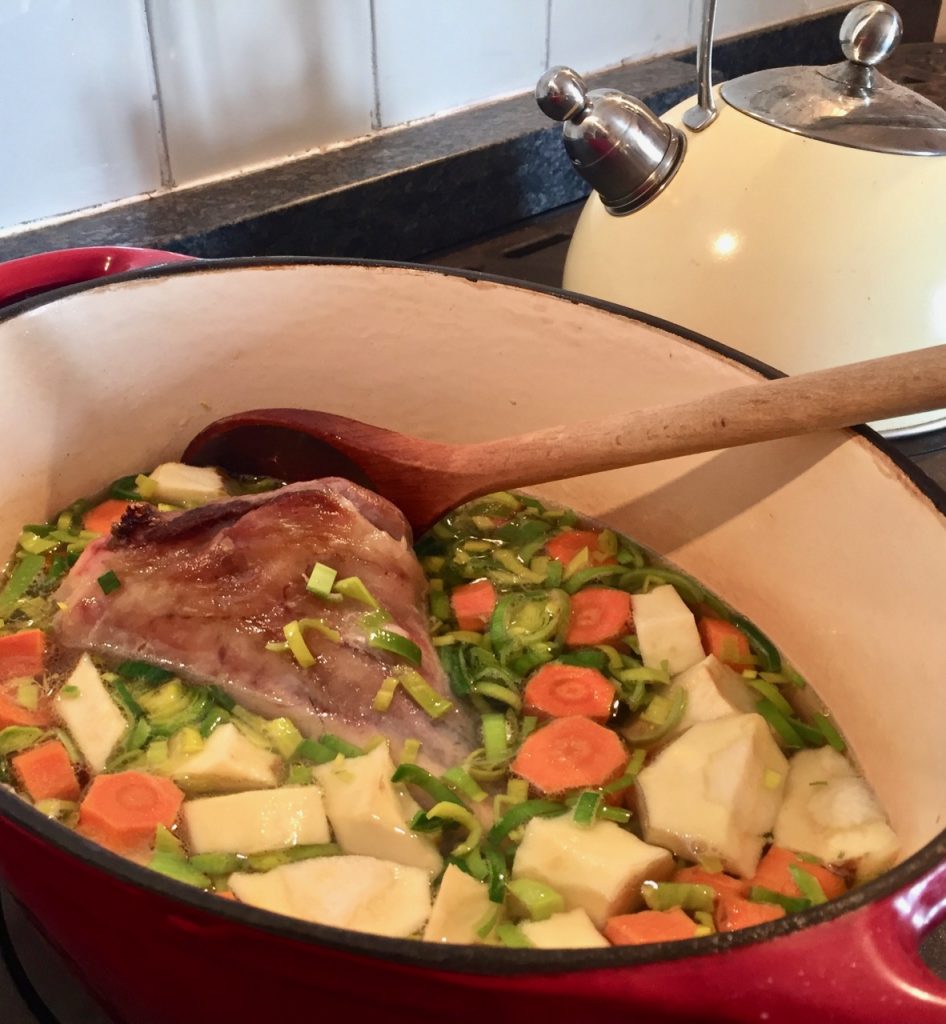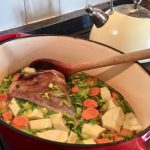Ingredients
- 1 Orkney Boreray mutton shank/part leg
- 15 mls Scottish rapeseed oil
- Half an onion peeled and chopped
- 1 Musselburgh leek cleaned and sliced
- 2 medium carrots peeled and cutchunks
- 1 parsnip
- 500 mls water
- Freshly milled black pepper
- Scottish sea salt to taste
- A generous sprig of rosemary
Servings:
Instructions
- Heat oil – or mutton dripping - in casserole dish on hob and seal the mutton on all sides until well caramelised. Add onion to soften in the juices.
- Add liquid, loosening any delicious browned residue, rosemary sprig and seasoning. Cover and slow cook for 1½ hours at 170 °C. Check occasionally to ensure it remains moist, adding a little water as necessary.
- Rinse the vegetables, cutting the peeled carrot and parsnip in chunks and slicing the leek.
- Remove casserole from oven and add all the vegetables.
- Return to oven for another hour. The mutton is ready when it falls from the bone. Taste and adjust seasoning.
- I usually strip all the mutton off the bone and return the shredded mutton to dish.
- It can then be served in heated bowls as a rustic soup or in a soup plate on a bed of buttery mash to sop up the wonderful juices.
- You can also thicken the sauce further if you wish by adding a dessertspoon of blended cornflour. Stir and bring to the boil for a couple of minutes for the desired result.
- Serves 2
Recipe Notes
Orkney Boreray is one of Scotland's most rare sheep, reared only on Orkney and available through Macbeths when in season.


